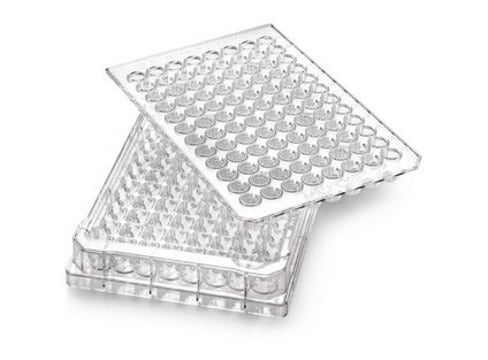추천 제품
material
Nylon membrane
plain filter
white filter
무균
non-sterile
특징
hydrophilic
제조업체/상표
Millipore
파라미터
100 °C max. temp. (curling may be seen at temperatures above 75°C)
필터 직경
47 mm
두께
55 μm
공극 크기
14 % porosity
20.0 μm pore size
배송 상태
ambient
유사한 제품을 찾으십니까? 방문 제품 비교 안내
일반 설명
Filter Code: NY20
Filter Type: Net filter
Nylon filters are compatible with a broad range of solvents. Two types are available: 1) Nylon Membrane Filters with pore sizes ranging from 0.20 to 1.2 µm, and 2) Woven Net Filters with mesh openings ranging from 5 to 180 µm.
Our 5 µm Nylon Woven Net Filter (NY054700) is commonly used in the automotive industry for cleanliness analysis.
Features & Benefits:
•Wide range of pore sizes available
•Resistant to aggressive solvents
Applications:
Particle Removal and Clarification; Solvent Filtration; Particle Analysis; Paint Monitoring; Automotive Cleanliness Analysis
Our 5 µm Nylon Woven Net Filter (NY054700) is commonly used in the automotive industry for cleanliness analysis.
Features & Benefits:
•Wide range of pore sizes available
•Resistant to aggressive solvents
Applications:
Particle Removal and Clarification; Solvent Filtration; Particle Analysis; Paint Monitoring; Automotive Cleanliness Analysis
애플리케이션
- Collection of algae and cells
- Particle analysis
- Large particulate filtration
- Toxicology and drug screening on C. elegans and zebrafish
- Background filter for particle imaging systems
- Prefiltration of solvents
Paint monitoring
또한 이 제품과 함께 일반적으로 구입
제품 번호
설명
가격
시험 성적서(COA)
제품의 로트/배치 번호를 입력하여 시험 성적서(COA)을 검색하십시오. 로트 및 배치 번호는 제품 라벨에 있는 ‘로트’ 또는 ‘배치’라는 용어 뒤에서 찾을 수 있습니다.
이미 열람한 고객
Patrícia C Henriques et al.
ACS applied materials & interfaces, 12(18), 21020-21035 (2020-04-03)
Graphene-based materials (GBMs) have been increasingly explored for biomedical applications. However, interaction between GBMs-integrating surfaces and bacteria, mammalian cells, and blood components, that is, the major biological systems in our body, is still poorly understood. In this study, we systematically
Lei Su et al.
Chemosphere, 252, 126567-126567 (2020-05-24)
Microplastic pollution is an important issue for environmental management as their ubiquity in marine and freshwaters has been confirmed. Pollution sources are key to understanding how microplastics travel from land to open oceans. Given that information regarding microplastic transport from
Hua Deng et al.
Environmental pollution (Barking, Essex : 1987), 258, 113658-113658 (2019-12-16)
Microplastics pollution in the environment is closely determined by the surrounding industrial and human activities. In present study, we investigated microplastics in water and sediment samples collected from a textile industrial area in Shaoxing city, China. The abundance of microplastics
Bingxu Nan et al.
Environmental pollution (Barking, Essex : 1987), 259, 113865-113865 (2020-01-01)
Compared to marine microplastics research, few studies have bio-monitored microplastics in inland waters. It is also important to understand the microplastics' uptake and their potential risks to freshwater species. The Australian glass shrimp Paratya australiensis (Family: Atyidae) is commonly found
자사의 과학자팀은 생명 과학, 재료 과학, 화학 합성, 크로마토그래피, 분석 및 기타 많은 영역을 포함한 모든 과학 분야에 경험이 있습니다..
고객지원팀으로 연락바랍니다.


